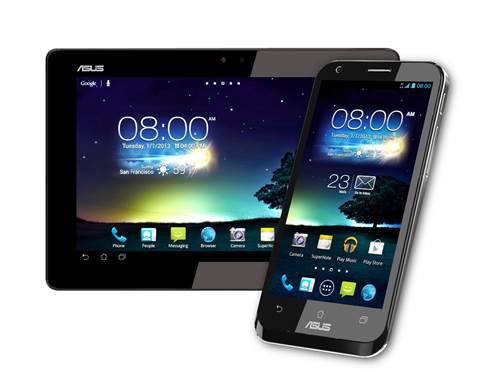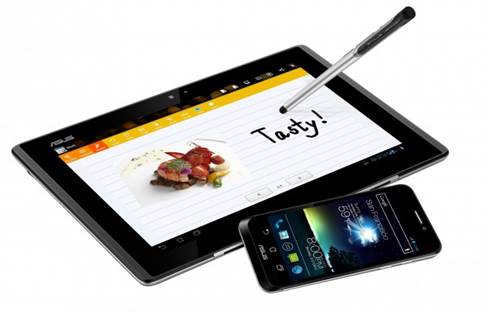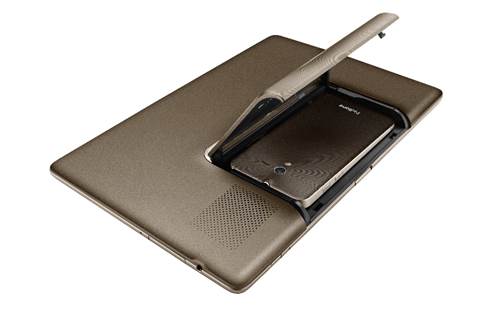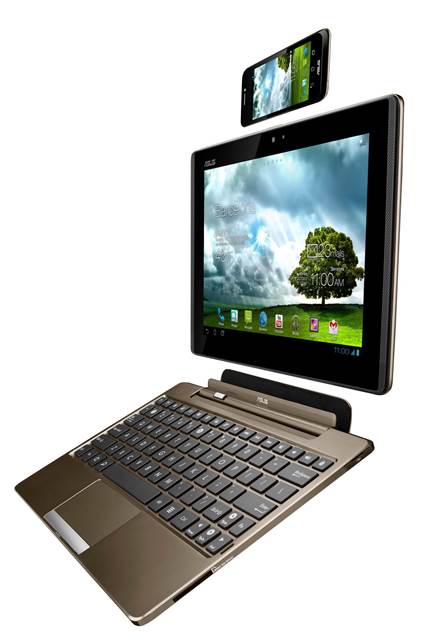First Impressions
Almost a year after it was released
worldwide, Asus decided to finally launch the PadFone in India. The timing
could not have felt more strange, as the PadFone 2 was already out worldwide
and in a month of PadFone being out in India, the sequel came swaying in.
Anyhow, the idea of having a single 3-in-l device to save space as well as
confusion of syncing data is rather unique and sounds intriguing. Plus, it’s from
Asus - a company that has given us rather nice notebook and computing
peripherals in the past. So is the PadFone going to be just as great?

Asus
PadFone
Review
The actual PadFone was the first device we
picked out to test and immediately were very happy with the display and build
quality of the phone. The shiny metal finish with the grooved back panel gives
you a good grip, but if you play high-end games for a while then heating will
literally make you keep the phone down for a while still it cools off.
Connectivity options are the standard fare you’d expect from an Android ICS
device, and browsing experience is really good but calling is a bit annoying
because the screen does not stay in complete lock mode and all our calls went
mistakenly on hold at one point or the other. There are some Asus PadFone
specific apps and widgets as well, but most are not that great to use. The
android ICS experience is fluid and stutter-free thanks largely to a dual-core
1.5 GHz processor. The benchmarking tests proved that the PadFone is a rather
good performer when it comes to multimedia and gaming, but heavy usage on the
phone tends to really drain out the battery real fast. Especially when using Wi-Fi
and/or 3G. Next, you can simply insert the phone in the back compartment of the
tablet and phone's connectivity and data gets shared with it. But because of
the back-panel for the phone, the build feels a bit bulgy on the right side
when in portrait mode. But the keyboard dock charges the tablet, which in turn
charges the phone itself when in this mode. The keyboard felt a bit crammed and
not the most comfortable to use, but the neat use of Android specific keys made
life a lot easier. Oh, there's a stylus too - if you wish to use, quite easy to
pair and works pretty well too.

There
are some Asus PadFone specific apps and widgets as well, but most are not that
great to use.
Station Dock
The PadFone dock connects easily and the
keyboard has a slot for the tablet to be fixed on to. Ditto for the tablet,
which has a micro-USB as well as mini-USB slots for the phone to be fitted
into. The overall dock does feel a bit heavy and we felt clumsy while using it,
but it does the job okay.

The
4.3-inch PadFone inserts directly into the 10.1-inch PadFone Station.
Camera
The 8MP snapper is quite good and gives
decent quality images, though not as good as the best ones in the category like
iPhone 4S/ iPhone 5 nor the Note II. Still quite pleasant, sharp and good in
contrast
Verdict
For an asking price of 65K, the 32GB
variant of the original PadFone is hard to recommend. Especially since the
newer PadFone 2 is already out for a similar price and has newer stuff in it.
The PadFone in itself is a good device, but not great, and a few annoying bits
here and there make it harder to fall in love with it. Buy it only if you don't
want to carry different devices around and are okay with slightly older
hardware/software combo.

PadFone
+ PadFone Station + PadFone Station Dock
|
Asus PadFone
specs
§ Price:
$1,185
§ 4.3"
Super AMOLED capacitive touchscreen
§ 10.1"
capacitive touchscreen PadFone Station
§ 1.5
GFIz dual-core processor
§ Android
OS v4.0 ICS
§ 8MP
rear camera with flash
§ 32GB
internal, microSD card support up to 32GB
§ 1GB
RAM
|